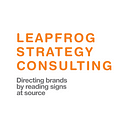Semiotics’ Importance in Brand Management And Development
Semiotics provides strategic research and analysis that produces strong and inspiring results that may be utilized for a variety of tasks ranging from brand strategy to planning and creative development. Semiotics is the study of all the signs and symbols in a particular culture that interact with the signs and symbols contained in a brand, whether communications, packaging, or product, and form customer comprehension. Semiotics may thus be a valuable instrument for increasing brand awareness, developing brand connections, brand management, and development, and adding market-differentiating brand attributes.
How does semiotics help brands?
Semiotics leads to inventions based on lived experiences. The main advantage of semiotics is that every innovation, communication/product/packaging design is based on human lived experience. This implies that any new product, brand, or message will make sense to customers right away since the outcomes are generated from the culture itself.
Semiotics is a desk-based analysis conducted by cultural scholars to evaluate and decipher the signals and symbols contained in the packaging of a specific category. We must look beyond what customers tell us and do research that provides cultural evidence of where design and overall brand communication are headed. For example, if we wanted to communicate the more emerging, cutting-edge manifestations of “naturalness” in a cosmetics product box design, the first step would be semiotics studies for packaging i.e., to grasp the cultural implications of naturalness.
Semiotic analysis vs traditional market research
While typical market research solicits people’s opinions and behaviors, semiotics investigates culture in depth to find the underlying cultural triggers for such reactions.
Consider the beverage black tea. Traditional market research will ask customers what they think about tea, what they like about it, what they don’t like about it, and what they would alter about it. It might lead to some pretty intriguing discoveries. Semiotics, on the other hand, reveals the cultural relevance of tea. Tea drinking has been a 350-year-old British custom. It represents a manner of socializing, resting, and healing from a hectic day. Tea consumption as we know it is profoundly ingrained in British society. Even though people drink tea in a variety of ways, with varying intensities, amounts of milk, and sugar, there is an unwritten rule regarding tea: the leaves and the beverage itself never change.
Any organization that has worked in the field of black tea innovation would be able to advise a tea major on go and no-go areas since the cultural stakes were too high to risk, especially given that black tea accounts for 70% of the UK market.
Brands may build culture rather than simply react to it. Another advantage of semiotics is that it may assist companies in actively creating culture rather than simply responding to it.
Brands may be either product leaders or product followers. Trendsetters are product-leading brands. They rise to the top of their respective fields through innovative product breakthroughs that transform the way we think about our interactions with other items, people, and even the planet. Take Twitter, for example. It not only allows everyone to publish digitally, but it also adds a speed aspect and affects the nature of communication in the internet world. We are all too aware of Twitter’s effect on politics, fashion, humanitarian operations, and even war.
It has altered the perception of humans in at least certain parts of the planet. Product leader brands include Red Bull, Facebook, and Dyson. Then there are brands like Dell or Gap, which are follower brands: while they are successful, their competitors outperform them.
Semiotics may assist companies in transitioning from followers to leaders: from responding to culture to creating it. To begin, companies must assess if they are creating or responding to the cultural context. If they are responding to it, they must consider how they may innovate to develop a culture to avoid being overlooked.
Semiotics may have a significant impact on brands and brand development, and semiotic analysis has been applied in some of the most interesting breakthroughs in recent years. Semiotics may aid companies in a variety of ways, including creating innovations that naturally fit into society, uncovering ideas and insights that would not necessarily emerge from standard market research, and assisting brands in creating culture rather than simply responding to it.
Semiotics does not have to be expensive or time-consuming. Even a few hours of semiotic thought may stimulate you and extend your thinking boundaries, allowing you to think laterally and strategically. Even in today’s time-pressed environment, taking a few moments to think semiotically can assist answer the one difficult issue your brand is facing and address difficulties that would otherwise take a long time to solve using traditional approaches. Semiotic thinking is unquestionably the brand management tool of the future.
